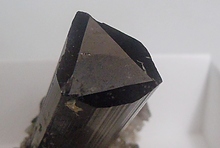Learning CenterWhat is a mineral?The most common minerals on earthInformation for EducatorsMindat ArticlesThe ElementsThe Rock H. Currier Digital LibraryGeologic Time
搜索矿物的性质搜索矿物的化学Advanced Locality Search随意显示任何一 种矿物Random Locality使用minID搜索邻近产地Search Articles搜索词汇表更多搜索选项
╳Discussions
💬 Home🔎 Search📅 LatestGroups
EducationOpen discussion area.Fakes & FraudsOpen discussion area.Field CollectingOpen discussion area.FossilsOpen discussion area.Gems and GemologyOpen discussion area.GeneralOpen discussion area.How to ContributeOpen discussion area.Identity HelpOpen discussion area.Improving Mindat.orgOpen discussion area.LocalitiesOpen discussion area.Lost and Stolen SpecimensOpen discussion area.MarketplaceOpen discussion area.MeteoritesOpen discussion area.Mindat ProductsOpen discussion area.Mineral ExchangesOpen discussion area.Mineral PhotographyOpen discussion area.Mineral ShowsOpen discussion area.Mineralogical ClassificationOpen discussion area.Mineralogy CourseOpen discussion area.MineralsOpen discussion area.Minerals and MuseumsOpen discussion area.PhotosOpen discussion area.Techniques for CollectorsOpen discussion area.The Rock H. Currier Digital LibraryOpen discussion area.UV MineralsOpen discussion area.Recent Images in Discussions
Mineral PhotographyLighting to bright for micro.

21st Jul 2010 03:19 UTCRobert A Santee

21st Jul 2010 04:42 UTCDan R. Lynch
To remedy this, turn off the lights in the room before your photo, or cover the eyepiece completely to block incoming light.
This may or may not be your problem - but it was my problem when I first started taking photos through my microscope.
21st Jul 2010 16:42 UTCEugene & Sharon Cisneros Expert
Your description of the problem isn't entirely clear to me. In any case, you should set the camera to the manual exposure mode and then set aperture wide open and adjust the shutter speed to get the proper exposure. You may also have to adjust the zoom, on the camera, to get full illumination of the field without vignetting. Set the manual focus to infinity. I am assuming that you are shooting through a digicam eyepiece.
Gene

2nd Oct 2010 14:52 UTCJason Box




版权所有© mindat.org1993年至2024年,除了规定的地方。 Mindat.org全赖于全球数千个以上成员和支持者们的参与。
隐私政策 - 条款和条款细则 - 联络我们 - Report a bug/vulnerability Current server date and time: 2024.4.19 20:08:46
隐私政策 - 条款和条款细则 - 联络我们 - Report a bug/vulnerability Current server date and time: 2024.4.19 20:08:46










